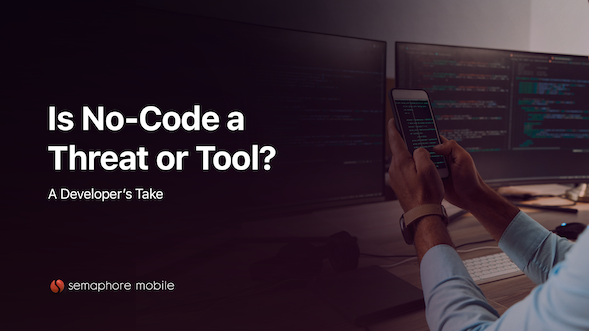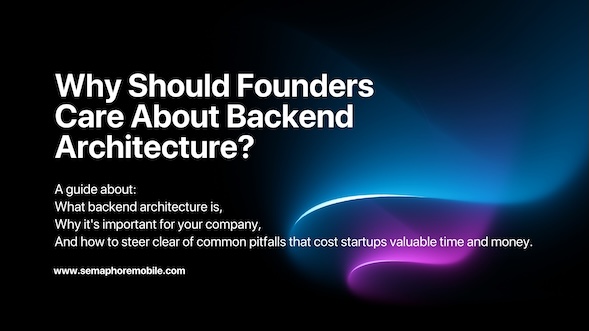
From Idea to Launch: How to Turn Your App Concept into a Scalable Product
An exciting new app idea may have struck you during a lengthy walk, while conversing with friends, or after a frustrating experience. You have a strong sense of the issue and are certain that there is a better way to solve it, but making that concept into a viable, scalable product? That is a completely different journey.
Too many founders dive straight into coding, only to retrace their steps weeks or months later because they made a mistake, the product didn’t fit the market, or the MVP was too big and didn’t work. In a world of urgency, smart building is a strategic building.
This guide will cover the entire product lifecycle, including what to anticipate, what to avoid, and how Semaphore can help you transition from concept to scale without wasting money or time.
Step 1: Clarify the Problem, Not Just the Idea
What is the most frequent error made by founders? Falling in love with the solution before fully comprehending the issue.
Discover the Real Issue
Spend time on problem interviews instead of features. Speak with those who experience the difficulties your app aims to alleviate. Pose open-ended inquiries such as “How are you handling that today?”, “What about your current solution is flawed or annoying?”
The objective is to confirm that there is a common and costly issue, not to validate your idea.
Don’t Build Features, Solve Problems
Ignoring this step frequently results in the creation of “nice to have” rather than actual “must have.” Understanding the underlying issue makes your product more targeted, necessary, and compelling.
Before writing a single line of code, Semaphore assists startups in identifying genuine problems that are worth resolving through lean discovery sprints.
Step 2: Define Your Core Value & Product Strategy
Excellent products don’t aim to please everyone. They provide value more quickly than alternatives, serve a clear user, and address a clear problem.
Nail Your Product Hypothesis
Every early stage product must have a central hypothesis.
- Problem: What actual, pressing issue are you resolving?
- User: Does anyone regularly feel this pain?
- Solution: How is this addressed in a unique way by your product?
This hypothesis serves as your compass for marketing, development, and design.
Align Business Goals with Product KPIs
Don’t wait until post-launch to define metrics. A good product strategy starts with measurable outcomes,
- Daily or weekly active users
- Onboarding completion rates
- Conversion from free to paid
- Retention after 7 or 30 days
Semaphore works with founders to define KPIs early, so every design and development decision ties back to business outcomes.
Step 3: Design with Purpose (UX/UI)
Beauty is only one aspect of good design. It all comes down to lowering friction and providing users with intuitive guidance.
Prototype for Behavior, Not Just Aesthetics
Start with wireframes and interactive prototypes that simulate real user flows. You want to know,
- Can users complete the core task in under 60 seconds?
- Where are they getting stuck?
- Do they understand what to do next?
Designing with purpose means testing user behavior, not just opinions on color and layout.
Semaphore’s UX First Philosophy
At Semaphore, design isn’t handed off; it’s integrated. Their team aligns UX with product goals and ensures that every screen maps to a user’s job to be done, not just a visual style.
Step 4: Build a Minimum Viable Product (MVP)
Many founders think MVP means a cheap, buggy version of the full product. It’s not.
An MVP is a focused tool that validates your riskiest assumptions with minimal effort.
Learn, Don’t Just Launch
Instead of asking “What can we build in 3 months?” ask,
- “What’s the smallest experiment that tells us if users care?”
- “What will prove our idea works in the real world?”
- “What’s most likely to fail?”
This reframes development around learning velocity, not just shipping.
Right-Sizing Your MVP with Semaphore
Semaphore helps founders scope MVPs based on true goal learning. Whether it’s a mobile app prototype, a single-feature web app, or a no-code experiment, they match tech choices to product risk, not vanity.
Step 5: Test, Learn, Iterate
Real product market fit doesn’t come from a perfect launch; it comes from rapid learning loops after launch.
Launch Early, Learn Fast
As soon as your MVP is usable, get it into the hands of early users. Track how they behave, not just what they say.
Key areas to analyze,
- Where do users drop off?
- What features get used most?
- Do users come back unprompted?
Early data often reveals surprising insights that no brainstorming session could.
Use the Right Tools
Semaphore integrates tools like,
- Mixpanel for funnel analysis
- PostHog for real-time user session insights
- Firebase for crash reporting and performance
These tools give you superpowers when it comes to deciding what to build next and what to kill.
Step 6: Build for Scalability from Day One
Scalability isn’t something you bolt on later; it needs to be baked into your product’s architecture and development practices from the start.
Think Beyond Today
You may only have 500 users now, but will your system hold up at 50,000? Can you add new features without breaking existing flows? Scale infrastructure automatically? Handle user onboarding, data sync, and error reporting with reliability?
Why Founders Choose Semaphore
When startups need more than a dev shop, they turn to Semaphore, a full-stack, outcome-driven partner who thinks like a co founder.
A Team That Knows Startups
Semaphore offers,
- Product strategy that challenges your thinking
- UX/UI design rooted in real user behavior
- Scalable development across mobile, web, and backend
- Quality assurance and launch support
Transparent, Results Focused Process
Semaphore believes in radical transparency. Weekly demos, direct Slack access, and outcome-based roadmaps keep everyone aligned and confident.
They don’t just build what you ask; they help you figure out what should be built, when, and why.
Frequently Asked Questions (FAQs)
Q1: How long does it take to build an MVP?
Typically, 8 - 12 weeks. Semaphore tailors the scope based on your learning goals and platform needs.
Q2: I’m a non-technical founder. Can Semaphore still help?
Absolutely. Many of Semaphore’s clients are non technical. Their team guides you through every decision.
Q3: Can I stay with Semaphore after the MVP?
Yes, Semaphore supports scaling products, managing infrastructure, and adding new features over time.
Q4: What industries do they specialize in?
Semaphore has experience across fintech, healthcare, marketplaces, B2B SaaS, and consumer apps.
Q5: Do I own my IP and code?
Yes. All code, designs, and assets are your property. Semaphore operates with full transparency.
Q6: Can I bring in Semaphore mid-project?
Definitely, whether you need a UX audit, help refactoring code, or just want a fresh product strategy, they’re flexible and founder-friendly.
Conclusion: Ready to Turn Your Idea Into a Product?
Building an app isn’t about rushing into development; it’s about solving the right problem, designing with purpose, validating fast, and planning for growth.
With Semaphore, you gain more than a technical team; you gain a strategic partner who’s as invested in your product’s success as you are.
Have an idea? Let Semaphore help you shape it into something real. Something scalable. Something users love. Our clients range in size from the large to the small. Let us know how we can help you. Drop us a line today and let’s start talking about your business.
What Are You Waiting For?
Copyright © 2021 Semaphore Mobile. All Rights Reserved.




Let us know your thoughts!